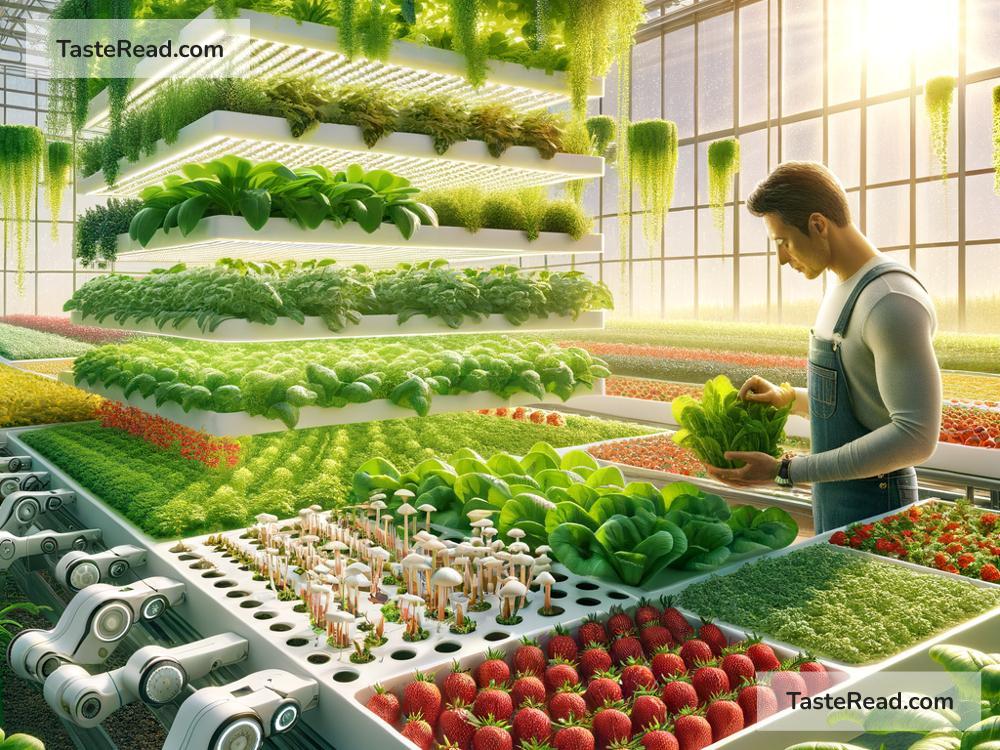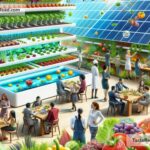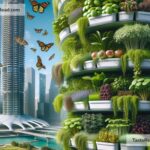The Future of Food and Regenerative Design: A Path Toward Harmony with Nature
Our relationship with food is evolving. In many ways, the way we produce and consume food has shaped human health, environment, and society. However, as the global population grows and climate change accelerates, it’s clear that our current systems of food production cannot sustain us forever. The future of food needs to be smarter, healthier, and more environmentally friendly. And this is where regenerative design comes into the picture.
What is Regenerative Design?
Regenerative design is all about creating systems that give back to the planet instead of taking away from it. Unlike traditional practices that can damage the environment, regenerative design aims to repair and replenish ecosystems. It focuses on working with nature rather than against it. In agriculture, this means creating food systems that restore soil health, conserve water, promote biodiversity, and reduce waste.
Think of regenerative design as building a healthier cycle: one where food production helps plants, animals, and people thrive without causing harm for future generations. It’s a way forward that sees the planet as a partner, not just a resource.
Why Does Food Need Regenerative Thinking?
Today, much of our food comes from systems that harm the earth. Industrial farming often strips soil of nutrients, releases harmful chemicals into waterways, and relies on practices that worsen climate change. For example:
- Soil Damage: Over-farming and chemical fertilizers reduce the soil’s ability to grow crops over time. The soil loses its nutrients and becomes less productive, leading to more deforestation and land misuse.
- Climate Change: Agriculture accounts for nearly one-third of global greenhouse gas emissions. From the methane produced by livestock to the energy-intensive farming practices, the system contributes to a warming planet.
- Water Stress: Growing crops like rice and raising cattle use huge amounts of water, leaving some areas dry and depleted.
- Biodiversity Loss: The way we farm often harms wildlife, destroys forests, and reduces the variety of plants and animals that are vital to ecosystems.
With the global population expected to reach nearly 10 billion by 2050, the question is: How can we feed everyone in a way that’s sustainable, fair, and healthy?
Regenerative Agriculture: Growing Food for the Planet
One solution lies in regenerative agriculture—a farming approach designed to heal the land while feeding people. It emphasizes techniques that restore soil and ecosystems, often mimicking natural processes. Some examples include:
- Cover Crops: Planting crops like clover or rye during the off-season helps prevent erosion, retain moisture, and restore soil nutrients.
- Crop Diversity: Instead of growing the same crop over and over (monoculture), farmers plant a mixed variety. This helps improve soil health and supports biodiversity.
- No-Till Farming: Avoiding tilling (plowing the soil) reduces soil disturbance, keeps nutrients intact, and allows microorganisms to thrive.
- Agroforestry: Mixing tree planting with crops enhances carbon capture, stabilizes soil, and provides habitats for wildlife.
Farmers practicing regenerative agriculture work with nature by restoring land over time. This method increases the food we can grow while protecting the health of the planet. It’s a win-win for farmers, consumers, and ecosystems.
Innovative Foods and Technologies
Beyond changing how we farm, the future of food also includes new ways of eating and producing food. Here are some exciting examples:
- Alternative Proteins: Plant-based meats, lab-grown meat, and insect-based proteins are becoming popular. These alternatives require less land and water than raising livestock, and they produce fewer greenhouse gases.
- Vertical Farming: In cities, vertical farms grow food in stacked layers indoors, using advanced technology like LED lights and hydroponics (water-based growing systems). Vertical farming uses significantly less land and water, making it an efficient way to produce fresh food nearby.
- Climate-Resilient Crops: Scientists are developing crops that can survive extreme weather, like drought-resistant corn and rice that grows in salty water. These innovations can help feed people as the climate changes.
- Food Waste Solutions: Technology is helping reduce food waste by turning leftovers into bioenergy, compost, or even new edible products.
These innovations are changing how food is grown, prepared, and consumed. They hold the potential to make food cheaper, more nutritious, and less damaging to the planet.
What Can We Do as Individuals?
The future of food depends not only on technology and agriculture experts but also on everyday choices. Here’s how you can play a role:
- Support Regenerative Farming: Buy products from farmers who practice sustainable methods or choose food with certifications like “organic” and “fair trade.”
- Eat Less Meat: Even reducing meat consumption slightly—say, opting for vegetarian meals once a week—can lower your environmental footprint.
- Waste Less Food: Plan meals carefully, store food properly, and get creative with leftovers to minimize waste.
- Grow Your Own Food: Starting a small garden at home can reduce reliance on industrial systems and reconnect you with nature.
A Hopeful Future
The challenges of feeding the world without harming the planet are big, but the solutions are within reach. Regenerative design offers a future where food production nourishes us and heals the planet. By working together—farmers, scientists, companies, and consumers—we can shift toward systems that protect both people and the environment.
In the future of food, abundance doesn’t have to come at the cost of Earth’s health. With regenerative agriculture and innovative ideas leading the way, we can build a food system that thrives in harmony with nature. Together, we can ensure that everyone has access to fresh, nutritious food while preserving the planet for generations to come.


